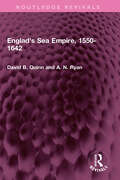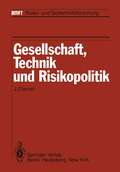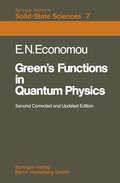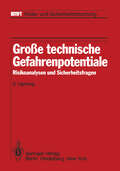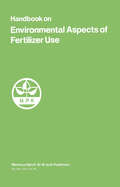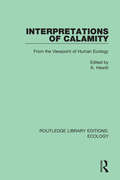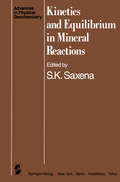- Table View
- List View
The Elements of Mechanics (Theoretical and Mathematical Physics)
by Giovanni GallavottiThe word "elements" in the title of this book does not convey the implica tion that its contents are "elementary" in the sense of "easy": it mainly means that no prerequisites are required, with the exception of some basic background in classical physics and calculus. It also signifies "devoted to the foundations". In fact, the arguments chosen are all very classical, and the formal or technical developments of this century are absent, as well as a detailed treatment of such problems as the theory of the planetary motions and other very concrete mechanical problems. This second meaning, however, is the result of the necessity of finishing this work in a reasonable amount of time rather than an a priori choice. Therefore a detailed review of the "few" results of ergodic theory, of the "many" results of statistical mechanics, of the classical theory of fields (elasticity and waves), and of quantum mechanics are also totally absent; they could constitute the subject of two additional volumes on mechanics. This book grew out of several courses on meccanica razionaie, i.e., essentially, theoretical mechanics, which I gave at the University of Rome during the years 1975-1978.
Englad's Sea Empire, 1550-1642 (Routledge Revivals)
by David B. Quinn A N RyanFirst published in 1983, England’s Sea Empire was originally part of the Early Modern Europe Today book series. It explores the relationships between the increase of English merchant shipping, the growth of naval power and the early experiments in overseas trade and colonisation. No other book combines these topics for the period from the middle of the 16th to the middle of the 17th century. In dealing with economic, strategic and technical problems, the authors write in language which is intelligible to non-specialist readers. They illustrate the arguments with generous quotations from contemporary sources and with maps of the regions under discussion. This book will be of value on undergraduate courses in early British or colonial or maritime history.
Englad's Sea Empire, 1550-1642 (Routledge Revivals)
by David B. Quinn A N RyanFirst published in 1983, England’s Sea Empire was originally part of the Early Modern Europe Today book series. It explores the relationships between the increase of English merchant shipping, the growth of naval power and the early experiments in overseas trade and colonisation. No other book combines these topics for the period from the middle of the 16th to the middle of the 17th century. In dealing with economic, strategic and technical problems, the authors write in language which is intelligible to non-specialist readers. They illustrate the arguments with generous quotations from contemporary sources and with maps of the regions under discussion. This book will be of value on undergraduate courses in early British or colonial or maritime history.
Environmental Science
by B. J. Smith G M Phillips M SweeneyFirst published in 1983. Routledge is an imprint of Taylor & Francis, an informa company.
Environmental Science
by B. J. Smith G M Phillips M SweeneyFirst published in 1983. Routledge is an imprint of Taylor & Francis, an informa company.
Erklärung, Voraussage, Retrodiktion Diskrete Zustandssysteme und diskretes Analogon zur Quantenmechanik Das ontologische Problem Naturgesetze und irreale Konditionalsätze Naturalistische Auflösung des Goodman-Paradoxons (Probleme und Resultate der Wissenschaftstheorie und Analytischen Philosophie #1 / B)
by Wolfgang StegmüllerEvolving Geographical Structures: Mathematical Models and Theories for Space-Time Processes (NATO Science Series D: #15)
by Daniel A. Griffith A. C. LeaProceedings of the NATO Advanced Study Institute, Cappuccini, San Miniato, Italy, July 18-30, 1982
Geochemistry of Sedimentary Ore Deposits
by J.B. MaynardThis book is an outgrowth of my interest in the chemistry of sedimentary rocks. In teaching geochemistry, I realized that the best examples for many chemical processes are drawn from the study of ore deposits. Consequently, we initiated a course at The University of Cincinnati entitled "Sedimentary Ore Deposits," which serves as the final quarter course for both our sedimentary petrology and our ore deposits sequence, and this book is based on that teaching experience. Because of my orientation, the treatment given is perhaps more sedimentological than is usually found in books on ore deposits, but I hope that this proves to be an advantage. It will also be obvious that I have drawn heavily on the ideas and techniques of Robert Garrels. A number of people have helped with the creation of this book. I am especially grateful to my students and colleagues at Cincinnati and The Memorial University of Newfoundland for suffering through preliminary versions in my courses. I particularly thank Bill Jenks, Malcolm Annis, and Dave Strong. For help with field work I thank A. Hallam, R. Hiscott, J. Hudson, R. Kepferle, P. O'Kita, A. Robertson, C. Stone, and R. Stevens. I am also deeply indebted to Bob Stevens for many hours of insightful discussion.
Geological and Mud Logging in Drilling Control: Catalogue of Typical Cases
by Ecole Nationale Supérieure du Pétrole et des MoteursGeological Evolution of the Earth During the Precambrian
by L.J. SalopProgress in Precambrian geology has been exceptionally great, indeed quite striking for geologists of the older generation; only some 30-40 years ago the Precambrian appeared as an uncertain and even mystic prelude to geologic evolution. Even the very name - Precambrian - means some indi visible unit in the early history of the Earth, the beginning of which is poorly known. At the same time it was obvious that the Precambrian formations are of extremely varied and complex composition and poor knowledge and lack of reliable methods of division and correlation were to blame for the lack of significant progress in studies of this early evolutionary stage of the planet. Certainly, even at the very start of Precambrian studies, the results obtained were quite promising, lifting as they did the mysterious veil over the regional Precambrian; but they presented no general realistic picture of this early stage in the Earth's evolution at that time. Recently, this situation has completely changed, due to new methods of study of the older forma tions, and due also to the refinement of some well-known methods, in particular of division, dating, and correlation of "silent" metamorphic strata. Application of different isotope methods of dating was most impor tant in providing objective rock age and thereby the age of geologic events recorded in these rocks. Thus it became possible to reconstruct the oldest geologic period of our planet.
Green’s Functions in Quantum Physics (Springer Series in Solid-State Sciences #7)
by Eleftherios N. EconomouIn this edition the second and main part of the book has been considerably expanded as to cover important applications of the formalism. In Chap.5 a section was added outlining the extensive role of the tight binding (or equivalently the linear combination of atomic-like orbitals) approach to many branches of solid-state physics. Some additional informa tion (including a table of numerical values) regarding square and cubic lattice Green's functions were incorporated. In Chap.6 the difficult subjects of superconductivity and the Kondo effect are examined by employing an appealingly simple connection to the question of the existence of a bound state in a very shallow potential well. The existence of such a bound state depends entirely on the form of the un perturbed density of states near the end of the spectrum: if the density of states blows up there is always at least one bound state. If the density of states approaches zero continuously, a critical depth (and/or width) of the well must be reached in order to have a bound state. The borderline case of a finite discontinuity (which is very important to superconductivity and the Kondo effect) always produces a bound state with an exponentially small binding energy.
Große technische Gefahrenpotentiale: Risikoanalysen und Sicherheitsfragen (BMFT - Risiko- und Sicherheitsforschung)
by S. HartwigHandbook on Environmental Aspects of Fertilizer Use
by International Potash International Potash Institute (IPI)Housing Policy and Economic Power: The Political Economy of Owner Occupation
by Michael Ball Professor Michael BallPublished in 2002, Housing Policy and Economic Power is a valuable contribution to the field of Human Geography.
Housing Policy and Economic Power: The Political Economy of Owner Occupation
by Michael Ball Professor Michael BallPublished in 2002, Housing Policy and Economic Power is a valuable contribution to the field of Human Geography.
Industrial Electromagnetics Modelling: Proceedings of the POLYMODEL 6, the Sixth Annual Conference of the North East Polytechnics Mathematical Modelling and Computer Simulation Group, held at the Moat House Hotel, Newcastle upon Tyne, May 1983 (Developments in Electromagnetic Theory and Applications #1)
by J. Caldwell R. BradleyDuring the past few years the rapid development of computer tech nology has made high power computing facilities more readily accessible to a greater proportion of our industrial and academic community. This development coupled with the recent upsurge in mathematical modelling and computer simulation has led to signif icant developments in electromagnetic field theory and its applic ations to industry. In view of such developments and the present high interest to both academics and industry the theme chosen for the Polymodel 6 Conference held at Newcastle upon Tyne in May 1983 was Industrial Electromagnetics Modelling. To date the North East Polytechnics Mathematical Modelling and Computer Simulation Group has organised five successful Polymodel. conferences each with a different theme. The objectives of the Polymodel group include the promotion of collaborative research between Newcastle, Sunderland and Teesside Polytechnics and industry in the areas of mathematical modelling and computer simulation. The aim of the Polymodel 6 Conference was to call on and use the modelling and computer.simulation expertise of eminent academics and industrialists who are deeply involved in the area of electro magnetics. These proceedings have a twofold purpose in that they contain current analytical and numerical techniques relevant to electromagnetic field problems and useful ideas on the modelling and simulation techniques which are most appropriate. It was also felt important to include implications. of. computer developments (both hardware and software) on such work.
Interpretations of Calamity: From the Viewpoint of Human Ecology (Routledge Library Editions: Ecology #4)
by K. HewittOriginally published in 1983, Interpretations of Calamity provides a provocative critique of the ‘dominant view’ of research into natural hazards. Throughout the world, there are now many people professionally engaged in the mitigation and control of risks & hazards, and the impact of continuing economic development will ensure that they are fully employed. There is a wealth of perspectives in the book, including weather and wheat yields in the Soviet Union and Canada, an historical view of underdevelopment and hazards in Ireland and the impact of a response to drought in southern Africa, the Sahel and the Great Plains of the USA. The book reflects the major themes of hazards in the context of economic development and social change. Most of the case studies are from the rural and agriculture scene. This book provides a unique view of the vital importance of food production and of the considerable, and sometimes calamitous, impact that frost, flood, storm and drought have on the wellbeing of millions of people and on the stability of the international economic system.
Interpretations of Calamity: From the Viewpoint of Human Ecology (Routledge Library Editions: Ecology #4)
by K. HewittOriginally published in 1983, Interpretations of Calamity provides a provocative critique of the ‘dominant view’ of research into natural hazards. Throughout the world, there are now many people professionally engaged in the mitigation and control of risks & hazards, and the impact of continuing economic development will ensure that they are fully employed. There is a wealth of perspectives in the book, including weather and wheat yields in the Soviet Union and Canada, an historical view of underdevelopment and hazards in Ireland and the impact of a response to drought in southern Africa, the Sahel and the Great Plains of the USA. The book reflects the major themes of hazards in the context of economic development and social change. Most of the case studies are from the rural and agriculture scene. This book provides a unique view of the vital importance of food production and of the considerable, and sometimes calamitous, impact that frost, flood, storm and drought have on the wellbeing of millions of people and on the stability of the international economic system.
Intracontinental Fold Belts: Case Studies in the Variscan Belt of Europe and the Damara Belt in Namibia
by H. Martin F. W. EderFinal Report of the Sonderforschungsbereich 48 - Göttingen, "Entwicklungen, Bestand und Eigenschaften der Erdkruste, insbesondere der Geosynklinalräume"
Inviscid Fluid Flows (Applied Mathematical Sciences #43)
by Hilary Ockendon Alan B. TaylerApplied Mathematics is the art of constructing mathematical models of observed phenomena so that both qualitative and quantitative results can be predicted by the use of analytical and numerical methods. Theoretical Mechanics is concerned with the study of those phenomena which can be ob served in everyday life in the physical world around us. It is often characterised by the macroscopic approach which allows the concept of an element or particle of material, small compared to the dimensions of the phenomena being modelled, yet large compared to the molecular size of the material. Then atomic and molecular phenomena appear only as quantities averaged over many molecules. It is therefore natural that the mathemati cal models derived are in terms of functions which are continuous and well behaved, and that the analytical and numerical methods required for their development are strongly dependent on the theory of partial and ordinary differential equations. Much pure research in Mathematics has been stimu lated by the need to develop models of real situations, and experimental observations have often led to important conjectures and theorems in Analysis. It is therefore important to present a careful account of both the physical or experimental observations and the mathematical analysis used. The authors believe that Fluid Mechanics offers a rich field for il lustrating the art of mathematical modelling, the power of mathematical analysis and the stimulus of applications to readily observed phenomena.
Jahrbuch der Hafenbautechnischen Gesellschaft (Jahrbuch der Hafenbautechnischen Gesellschaft #39)
by Rudolf Schwab Wolfgang BeckerKinetics and Equilibrium in Mineral Reactions (Advances in Physical Geochemistry #3)
by Surendra K. SaxenaWith contributions by numerous experts


